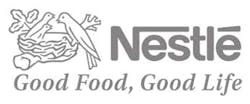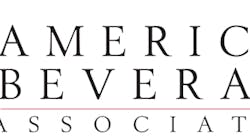Nestlé Supports The 2015-2020 Dietary Guidelines For Americans Recommendations
Washington D.C.,Jan 7, 2016—Today Nestlé in the United States announced its support for the just released 2015-2020 Dietary Guidelines for Americans (DGA), which provides science-based advice on promoting health and reducing the risk of major chronic disease through a healthful eating pattern and regular physical activity. Since 1980 the DGA has served as nutrition guidance for the public, to inform the nutrition programs and policies of government agencies, and to influence product innovation, renovation, and other nutrition-related initiatives of food manufacturers like Nestlé.
According to Paul Bakus, President of Nestlé Corporate Affairs, “97% of U.S. households purchase Nestlé products. We have a responsibility to provide nutritious foods and beverages that fit into a healthy eating pattern, and to provide tools that make it easier for Americans to achieve the recommendations outlined in the DGA."
Nestlé takes seriously its role in nutrition, health and wellness and is working diligently to address public health priorities and meet consumers’ changing preferences through efforts that are consistent with and supportive of the DGA recommendations. Examples of some of the initiatives undertaken by Nestlé in support of previous DGA recommendations include:
- Reducing Added Sugars: In particular, Nestlé is strongly committed to helping consumers meet the DGA recommendation to consume less than 10 percent of calories per day from added sugars, as illustrated by our recently updated Nestlé Policy on Sugars and support for FDA’s proposal to require added sugars on the Nutrition Facts Label. The NESQUIK® brand has been undergoing continuous sugar reduction for over a decade. Since 2000, Nesquik’s most popular chocolate powder has seen a 35 percent reduction in added sugar. Since the most recent reformulation announced in 2015, every Nesquik flavor across its powder and ready-to-drink portfolio has only 10.6 grams of added sugar.
- Recipe Innovation: Nestlé has worked to feature more nutrients and ingredients with positive health effects in its food and beverages, such as calcium, protein and whole grains. Meanwhile, the company continues to eliminate trans fat and reduce saturated fat, added sugars, sodium, and excess calories. For example, in 2015 the STOUFFER’S® brand launched STOUFFER’S® Fit Kitchen, wholesome and contemporary frozen meals that offer 25 or more grams of protein, paired with complex carbohydrates and crisp vegetables. The new recipes were created with nutrition in mind – from using healthier cooking methods, like grilling or oven-roasting, to using herbs instead of oil to season and bring a burst of flavor.
- Healthy Hydration: Nestlé commends the DGA recommendation that consumers choose beverages such as water to meet their hydration needs without increasing calories or added sugars intake.
- Nestlé Portion Guidance™: Nestlé strongly agrees with the DGA recommended strategy to adapt portion sizes to help consumers get the nutrition they need within their calorie limits. To help consumers make appropriate portion choices intuitively, Nestlé offers portion-controlled options across its portfolio and provides on-pack portion guidance to communicate moderate portions simply and clearly. Nestlé recently updated more than 400 labels in its candy portfolio alone to incorporate Thoughtful Portion™ advice.
- Nutrition Education: As a MyPlate Strategic Partner, Nestlé used the 2010 Dietary Guidelines for Americans to develop the Balance Your Plate educational campaign, which helps consumers build nutritious, delicious and convenient meals. Additionally, Gerber has reached over 31 million consumers with MyPlate messages to educate expecting moms and parents and caregivers of children over two years old about the importance of early childhood nutrition.
- National Partnerships: Additionally, through partnerships with National Education Association Healthy Futures, which provides educators with free materials to educate K-6 students about nutrition and physical activity, and the Boys and Girls Club of America, Nestlé translates the DGA into practical, tailored interventions at the community level.
In line with its commitment to Good Food, Good Life®, Nestlé aims to lead industry efforts to help ensure consumers have access to the foods, beverages and information they need to make choices consistent with the DGA. Nestlé looks forward to reviewing the 2015-2020 DGA and to improving the product offerings for the American public consistent with the 2015-2020 DGA recommendations.






